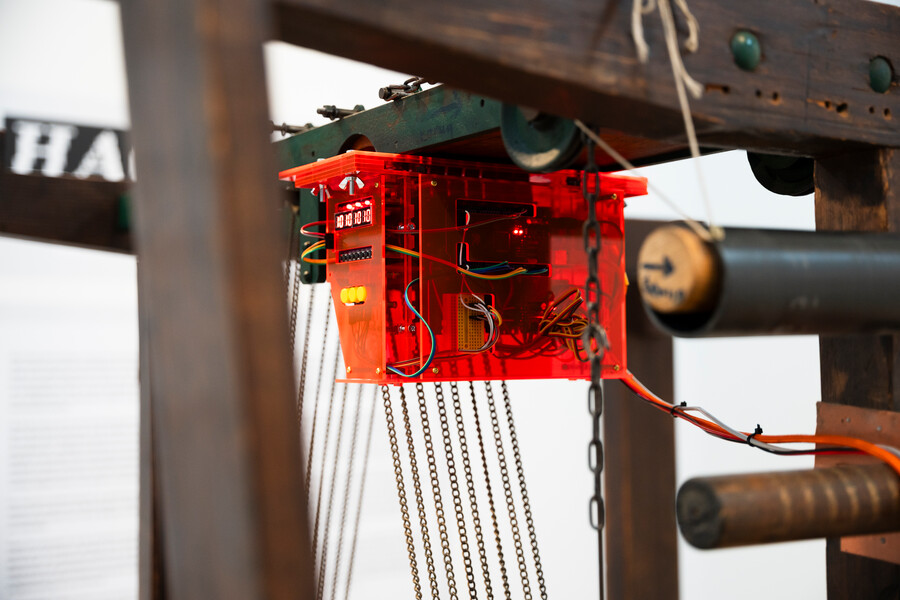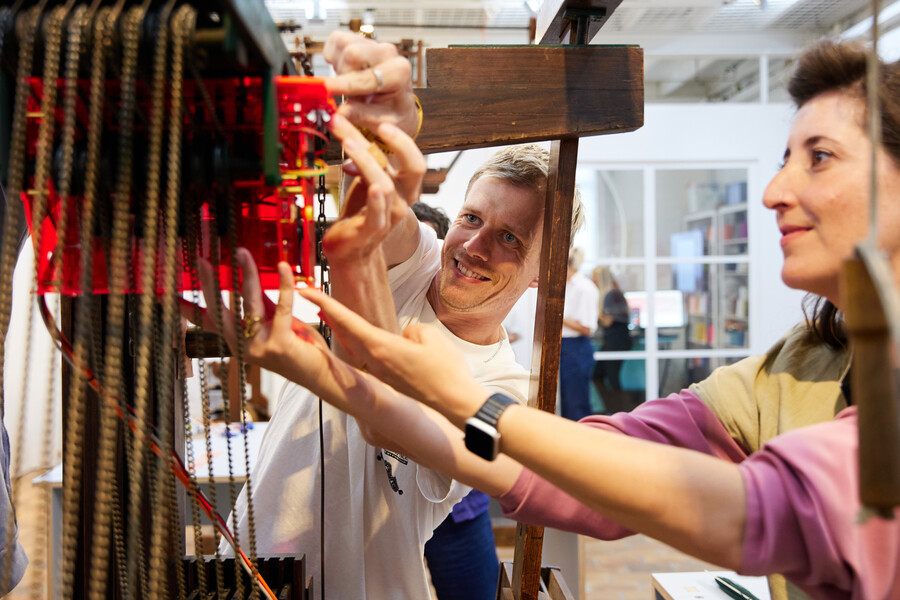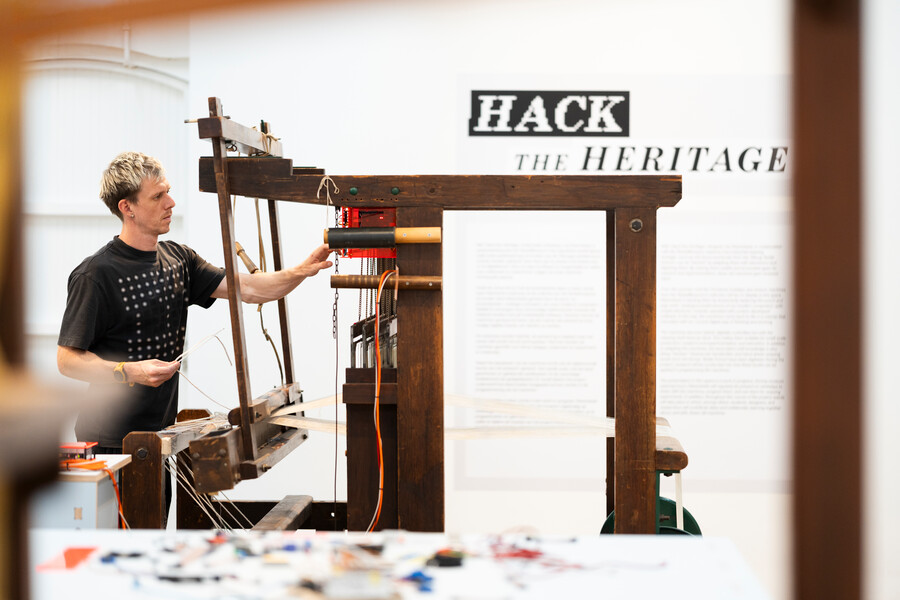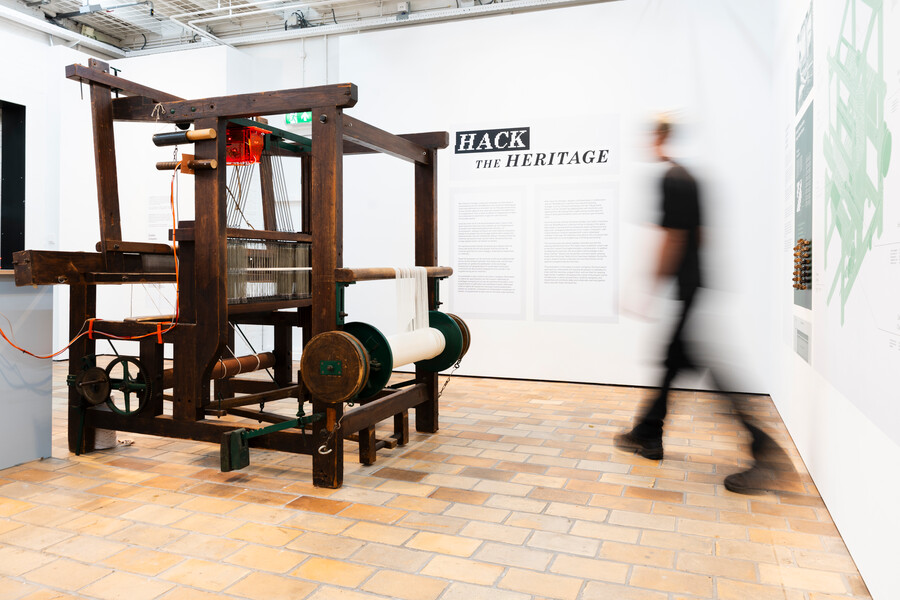
Jos Klarenbeek ‘hacks’ two historic looms
13 October 2025
As if they were brand-new technology. Over the coming months, designer Jos Klarenbeek will be ‘hacking’ two looms from the TextielMuseum’s depot. The machines – a Jacquard and a Dobby – are over 100 years old. Jos explains: ‘There are looms for hobbyists and modern industrial machines. There was little in between that was accessible. With this hack, I hope to expand that range.’
Buildig on precious research
Spoiler alert: Jos’ hack at the TextielMuseum is not entirely new. It builds on research he began in his own studio. Using a Dobby loom, he worked on a project for the leading Danish textile company Kvadrat. ‘Experimenting with weaving step by step adds depth to my work,’ he says. ‘By following the weaving process, pausing, adjusting and continuing, I gain a better understanding of what I am creating. It provides insight and valuable knowledge of the craft that should not be lost.’ At the TextielMuseum, he is expanding his research and developing a way to share knowledge about the hacked devices with other designers and interested parties.
‘Experimenting step by step gives my work depth’

Photo by Indy Kroon - Daily Catch
Experimenting with heritage
What does Jos’ hack look like? A Dobby loom works with a wooden pin chain, which is used to ‘programme’ the machine, or rather, to control the order in which the shafts move up or down. Jos replaced that system with a laser-cut box containing an Arduino microcontroller, which he programmes in real time on his laptop. ‘This allows me to make adjustments while weaving,’ says Jos. ‘I wanted to explore this further. Can this also be done with other looms, such as a Jacquard?’
Michelle Baggerman, curator of Industrial Heritage and educator at the TextielMuseum, says: ‘The machines in our TextielLab are computer-controlled and intended for industrial use. It is unique that we use them in the lab for experimentation and research – in industry, you don’t just shut something down to make adjustments – but it requires a lot of technical knowledge, guidance and support. Jos’ research makes it possible to learn and experiment more independently.’ She adds: ‘What we can do with textiles today is rooted in the past. There is a wealth of knowledge there, which is why we like to take our heritage out of storage and put it to work. In our collaboration with Jos, we are doing that quite literally.’

Photo by Patty van den Elshout for TextielMuseum
Understanding, applying and innovating
Jos will continue his research in the new Project Space at the TextielMuseum over the coming months. This space has been set up as both a workshop and an exhibition area, with information about the technology behind the Dobby and Jacquard looms. There are also thick books with handwritten and drawn weaving instructions from the museum library, made and used by students at the Tilburg Textile School.
‘This loom works with a punch card,’ says Jos of the Jacquard loom. ‘Punching used to be a specialisation in itself: the card controls 400 warp threads, and the technology is very complex.’ Laughing, he adds: ‘It’s a nice challenge to hack this loom. Whether and how it will work out will become clear in the coming months.’
Michelle comments: ‘Knowledge about the machines Jos works with is still available from people who used to weave with them here. By revaluing the looms, Jos is building a bridge to the present day, and we are passing on that knowledge to artists and designers.’
Accessible hacking for all
Jos stresses that his work is not entirely new. Old looms have often been digities on a large scale, particularly in low-wage countries where the textile industry relocated. The Amsterdam-based designer, however, takes a different approach: soon, anyone will be able to hack an old loom. The Arduino box is easy to replicate; the design will be available online. It can be attached to existing holes without sawing or drilling into the loom. Crucially for the museum, the looms can always be returned to their original state.
Programming is currently carried out via Arduino’s open-source platform. ‘I am now developing software to make programming more accessible. Once the module on the looms and the software are working properly, I want to see if I can convert everything into a kit. With the software, I can then create something similar, for example as a downloadable package with the kit.’
Looking ahead
The hacking of the machines will continue until early January. In the meantime, the books from the Tilburg Textile School have been digitised, and Jos is working with other interested parties to explore how this knowledge can be used digitally. 'The ultimate dream is to automatically send patterns from these books directly to the loom. It's wonderful and interesting to learn from these old designs, to test and experiment with them. But that's still a long way off," says Jos.

Photo by Patty van den Elshout for TextielMuseum
Hack the Heritage is located in the Project Space, adjacent to the TextielLab. The presentation and workshop can be visited until 4 January 2026 during the museum’s opening hours.
